
Chefchaouen, a picturesque city in Morocco, offers a diverse range of activities that cater to different interests. Here's a summarized list of things you can do:
Exploring the Medina in Chefchaouen is an enchanting experience that offers a glimpse into the rich culture and history of this Moroccan city. Here are some key aspects and tips for exploring the Medina: 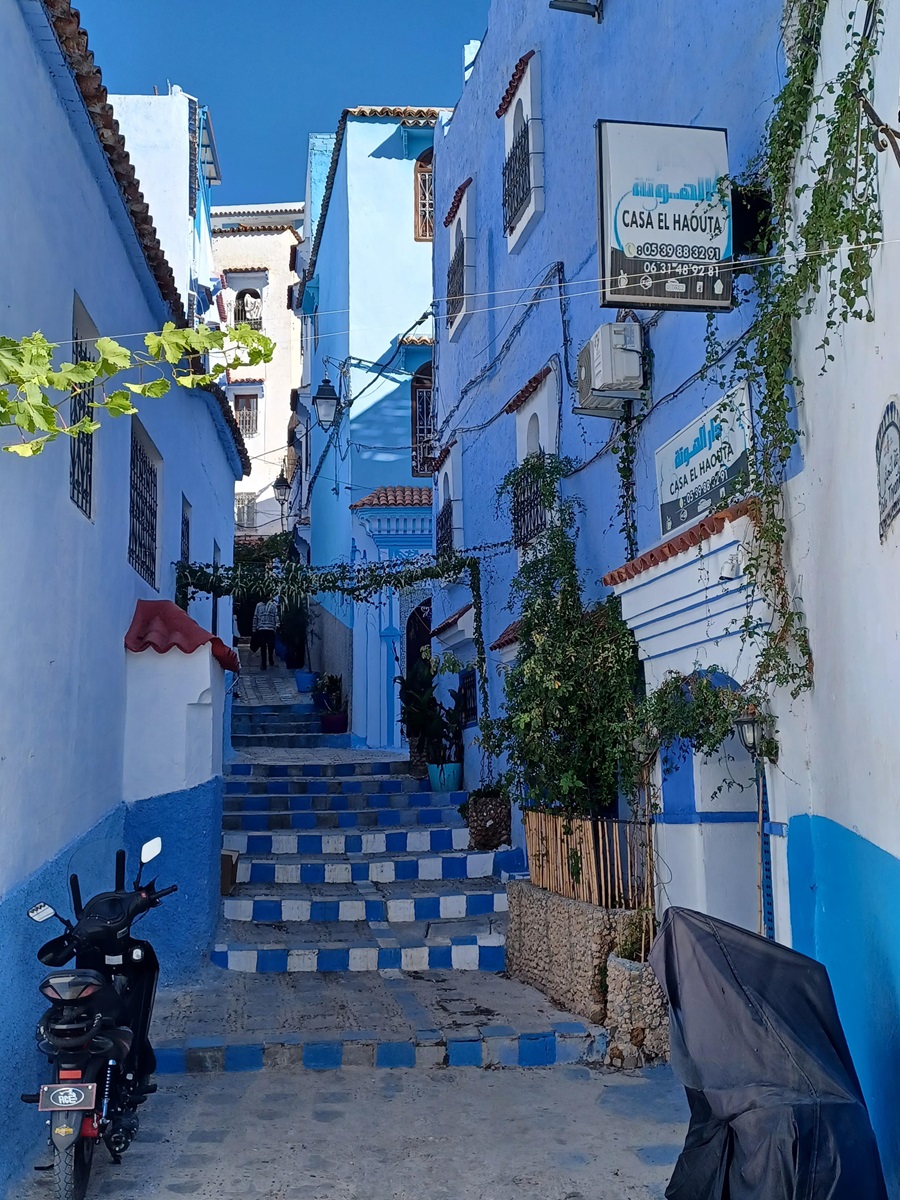
Labyrinth of Streets: The Medina is a maze of narrow, winding streets painted in various shades of blue, creating a dream-like ambiance. It's a place where getting lost is part of the charm, leading you to discover hidden gems and picturesque corners.
Photogenic Views: The blue walls provide a stunning backdrop for photography. Early mornings are ideal for capturing the serene beauty of the streets without the crowds.
Cultural Immersion: The Medina is not only about its aesthetic appeal but also about cultural immersion. You might encounter local artisans at work, traditional shops, and everyday life scenes that offer a deeper understanding of the local community.
Local Crafts and Shopping: The Medina is a great place to shop for unique crafts, including textiles, pottery, and jewelry. Haggling is a part of the shopping experience, so feel free to negotiate prices.
Historical Sites: While exploring, you’ll come across historical sites and architectural wonders like the Grand Mosque and the Kasbah Museum. Note that entry to some religious sites may be restricted to non-Muslims.
Interacting with Locals: Engaging with the locals can enrich your experience. Whether it’s a casual conversation or a visit to a local workshop, these interactions add a personal touch to your visit.
Culinary Delights: The Medina offers a variety of culinary experiences, from street food to traditional Moroccan cuisine. Trying the local mint tea is a must.
Respectful Photography: While the Medina is incredibly photogenic, it's important to be respectful when taking photos, especially of people. Always ask for permission before photographing locals.
Comfortable Footwear: The streets can be uneven and steep in places, so wear comfortable shoes for walking.
Stay Within the Medina: For a fully immersive experience, consider staying in one of the traditional guesthouses (riads) within the Medina
Panoramic City Views: From various rooftops in Chefchaouen, you can enjoy panoramic views of the city's stunning blue-washed buildings set against the backdrop of the Rif Mountains. The contrast of the blue medina against the natural landscape is truly picturesque.
Best Time for Views: Sunrise and sunset are particularly magical times to be on a rooftop. The changing light casts different hues on the city, creating a mesmerizing effect. Early morning also offers a quieter experience before the city wakes up.
Photography: For photography enthusiasts, the rooftops provide an excellent vantage point for capturing the essence of Chefchaouen. The elevated perspective allows for capturing sweeping views of the city’s architecture and the surrounding landscape.
Relaxation and Reflection: Beyond just taking photos, spending time on a rooftop in Chefchaouen can be a serene experience, perfect for relaxation or reflection. It's an opportunity to take in the beauty of the city at your own pace.
Dining with a View: Some rooftops in Chefchaouen are part of cafes or restaurants, allowing you to enjoy local cuisine or a cup of Moroccan mint tea with a stunning view.
Choosing a Rooftop: Many hotels and guesthouses in Chefchaouen offer rooftop access to their guests. It's worth considering this when booking your accommodation. Additionally, there are public rooftops and terraces that you can visit, sometimes for a small fee.
Social Experience: Rooftops can also be a social spot, where you can meet other travelers or locals, sharing experiences and travel stories.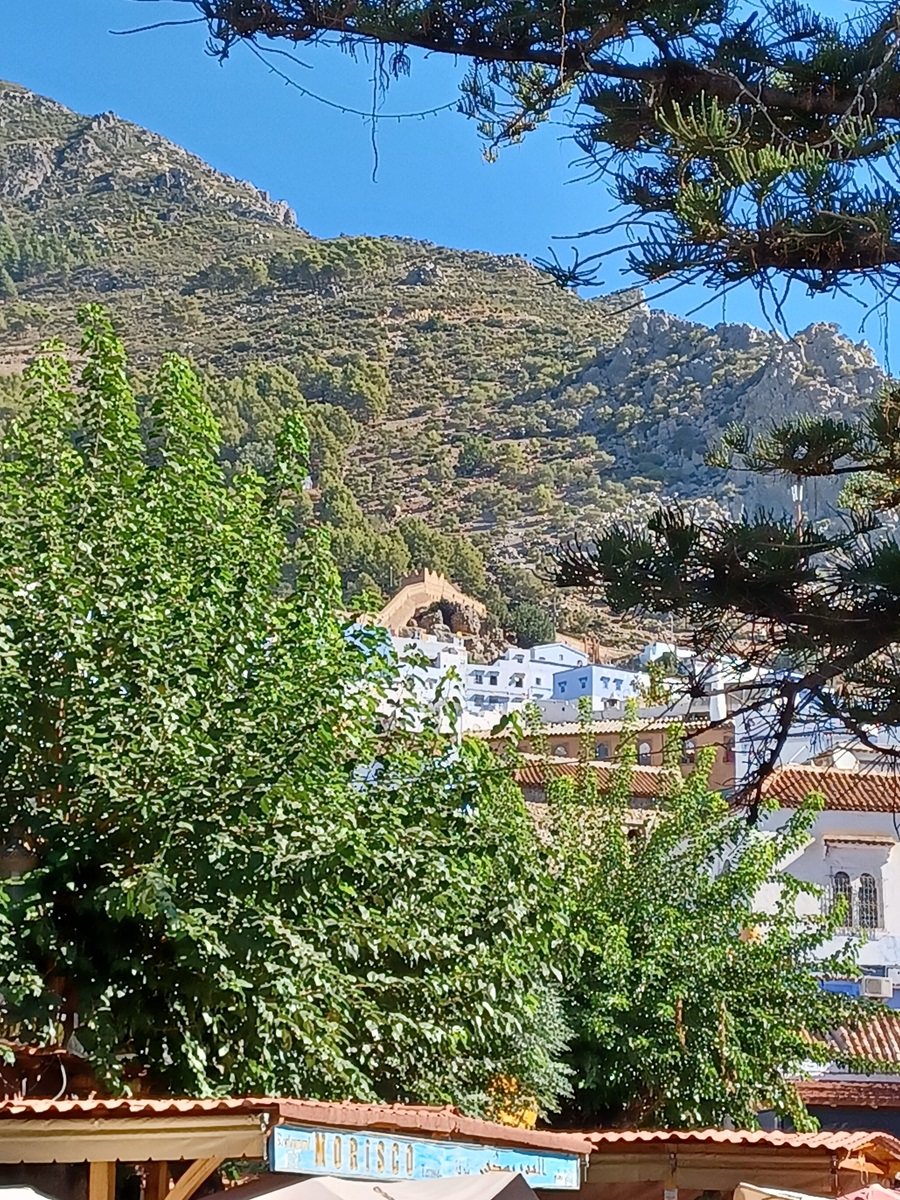
Exploring the heritage sites in Chefchaouen provides a rich insight into the history and culture of the area. Here are some key heritage sites you can visit:
Kasbah Museum: Located in the heart of the Medina, the Kasbah Museum is housed in a 15th-century fortress. It offers a glimpse into the history of the region with its collection of artifacts, old photographs, and traditional Moroccan art. The museum also features beautiful Andalusian gardens and a tower that provides panoramic views of the city.
Grand Mosque: The Grand Mosque, notable for its unique octagonal minaret, is an important cultural and religious site in Chefchaouen. While non-Muslims may not enter the mosque, its exterior architecture, influenced by Andalusian style, is worth admiring.
Plaza Uta El-Hammam: This central square in the Medina is surrounded by historical buildings, including the Kasbah and the Grand Mosque. The plaza is a great place to experience the local culture, with cafes and restaurants where you can observe the daily life of the city.
Spanish Mosque: Located just outside the Medina, the Spanish Mosque offers a historical glimpse into the Spanish influence in the region. It's particularly known for its beautiful location, offering stunning views of Chefchaouen, especially at sunset
Experiencing a hammam, a traditional Moroccan bathhouse, in Chefchaouen is a unique cultural activity that offers relaxation and insight into local customs.
Traditional vs. Tourist-Friendly Hammams: There are different types of hammams available. Traditional hammams offer a more authentic experience, often frequented by locals. Tourist-friendly hammams provide a slightly more comfortable experience, often with additional amenities and services geared towards visitors.
The Hammam Process: The hammam experience typically involves a steam bath, followed by a body scrub using a special glove (kessa) and a unique soap known as 'black soap' or 'savon beldi.' This is followed by a massage and relaxation.
Gender-Specific Areas: Hammams are usually segregated by gender, with specific times or separate areas for men and women.
Local Interaction: Visiting a traditional hammam can also be a social experience, as it's a place where locals often gather and socialize.
Etiquette and Tips: It's important to follow local etiquette in a hammam. This includes being mindful of privacy and modesty. Bringing your own towel, flip-flops, and a change of clothes is recommended. Also, it's customary to tip the person who assists you with the scrub and massage.
Relaxation and Health Benefits: Hammams are known for their health benefits, including improved circulation, skin exfoliation, and relaxation.
Locations in Chefchaouen: In Chefchaouen, you can find both traditional and tourist-friendly hammams. Hammam El Balad is recommended for a more genuine local experience, while Lina Riad and Spa caters more to tourists and offers a luxurious setting.
Hiking Jebel El-Kalaa is an adventurous and rewarding activity for those visiting Chefchaouen. Here's what you should know about this hike:
Challenging Terrain: Jebel El-Kalaa is a demanding hike, suitable for those in good physical condition. The trail is steep and rugged in parts, offering a challenging yet enjoyable experience for avid hikers.
Stunning Views: The hike rewards you with breathtaking views of the surrounding Rif Mountains and the city of Chefchaouen. It's an excellent opportunity for photographers and nature enthusiasts.
Preparation is Key: Proper preparation is essential for this hike. This includes wearing appropriate hiking gear, bringing enough water and snacks, and possibly a map or a GPS device for navigation.
Duration and Distance: The hike can take a full day, depending on your pace and how often you stop to enjoy the views. It's important to start early in the day to avoid being out after dark.
Local Guides: Consider hiring a local guide. Not only do they provide valuable insights and information about the area, but they can also help prevent you from getting lost.
Weather Considerations: Pay attention to the weather forecast. The mountain weather can be unpredictable, so it's best to be prepared for changing conditions.
Environmental Respect: As with any natural area, it's important to respect the environment. This means staying on designated trails, not disturbing wildlife, and carrying out all trash.
Directions: Directions to the trailhead are available in guidebooks and from local hotels. It’s advisable to consult these sources for the most current and detailed information.
Chefchaouen, with its distinctive blue streets and buildings, offers ample opportunities for photography enthusiasts.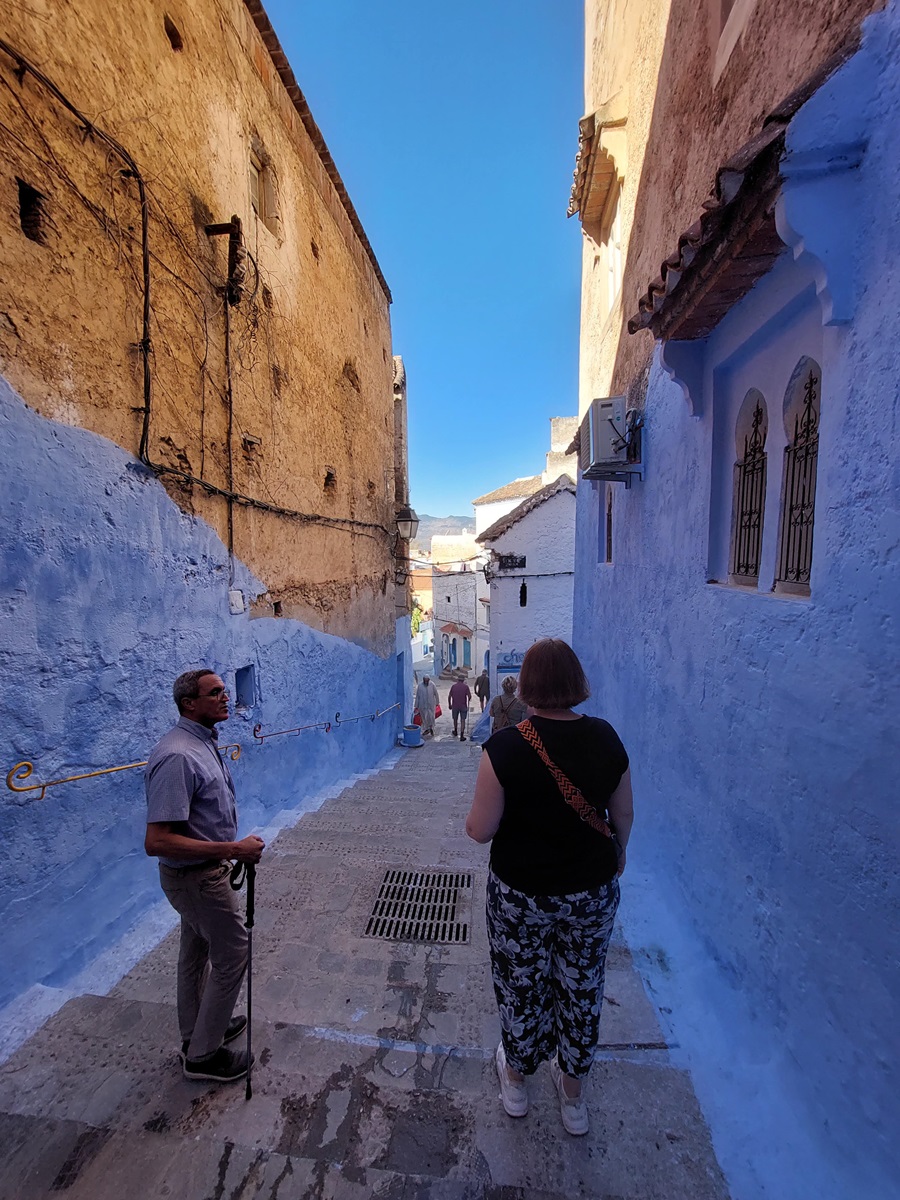
Best Time for Photos: Early morning is ideal for photography in Chefchaouen. The streets are quieter, and the soft morning light enhances the blue hues of the city. Sunrise also offers unique lighting conditions.
Iconic Spots: Explore the Medina for its photogenic alleyways, colorful doors, and quaint squares. The blue-washed walls serve as a unique backdrop for portraits and street photography.
Rooftop Views: Capture panoramic shots of the city from rooftop vantage points. These locations offer a broader perspective of the city's layout and its surrounding landscape.
Cultural Elements: Include local elements in your photos, such as traditional Moroccan crafts, street.
Respect Privacy: Always ask for permission before taking photos of local people, especially in more conservative areas. Be mindful of cultural sensitivities.
Play with Colors and Textures: Chefchaouen’s vibrant colors and textures provide a rich canvas for creative photography. Experiment with different compositions and angles to capture the essence of the city.
Capture Everyday Life: Street photography can be particularly rewarding in Chefchaouen, capturing the daily life and rhythm of the city.
Nature and Landscape: Don't forget the natural surroundings of Chefchaouen. The Rif Mountains and the lush countryside provide a beautiful contrast to the urban environment.
Talassemtane National Park: This park is known for its lush landscapes, including fir and cedar forests. It's ideal for hiking and offers trails suitable for various skill levels.
Akchour Waterfalls: Located within Talassemtane National Park, the Akchour Waterfalls are a series of stunning cascades set against the backdrop of the Rif Mountains. The area offers hiking trails that lead to the waterfalls, providing a refreshing escape into nature. The waterfalls are accessible by a hike from the village of Akchour.
Rif Mountains: Trekking in the Rif Mountains can be a rewarding experience. The mountains offer scenic views and a chance to explore the natural beauty of the region. There are options for both shorter hikes and longer treks, depending on your interest and fitness level.
God’s Bridge: This natural stone arch is an impressive geological feature in Talassemtane National Park, formed over centuries by the river flow.
Exploring the local cuisine and enjoying mint tea are integral parts of the Chefchaouen experience. Here's an overview of what you can expect:
Mint Tea: Moroccan mint tea is not just a drink but a symbol of hospitality and tradition. Made from green tea, fresh mint leaves, and a generous amount of sugar, it's served throughout the day. The ritual of pouring the tea from a height to create a froth is a unique aspect and often indicates the level of welcome.
Tagine: This is a classic Moroccan dish, slow-cooked in a conical clay pot (also called tagine). Ingredients typically include meat (like lamb, chicken, or beef), vegetables, and a rich blend of spices. It's a must-try for its tender, flavorful meat and aromatic sauce.
Couscous: Another staple, couscous is usually served with vegetables and meat or fish. It's traditionally eaten on Fridays, but you can find it in restaurants throughout the week.
Harira: A popular Moroccan soup made from tomatoes, lentils, chickpeas, and meat, seasoned with a blend of herbs and spices. It's especially common during Ramadan but available year-round.
Pastilla: A unique savory and sweet pie, traditionally made with pigeon meat (though chicken is now more common), almonds, eggs, and spices, wrapped in a crispy filo pastry and topped with powdered sugar and cinnamon.
Street Food: Exploring the street food in Chefchaouen is a delightful experience. Look out for snacks like grilled corn, kebabs, and various pastries.
Local Eateries: For an authentic dining experience, visit local eateries and cafes. They offer a wide range of Moroccan dishes, giving you a taste of the local culinary scene.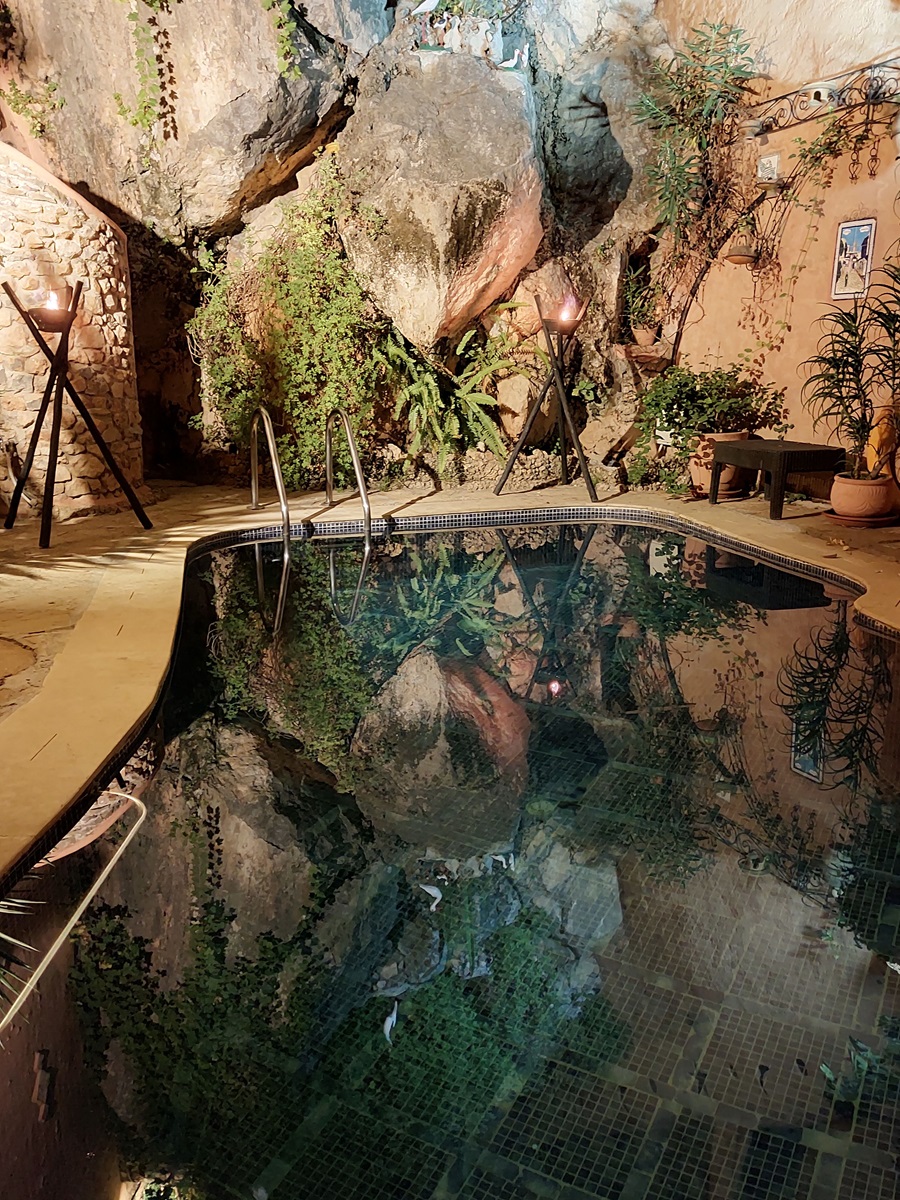
Visiting Talassemtane National Park is a highlight for nature enthusiasts traveling to Chefchaouen. Here's what you can expect from this natural wonder:
Diverse Landscapes: The park features a varied landscape of rugged mountains, deep gorges, and lush forests. It's part of the larger Rif mountain range and offers some of the most stunning natural scenery in Morocco.
Hiking Trails: There are numerous trails for all levels of hikers, from easy walks to challenging treks. The trails lead through beautiful scenery, including fir and cedar forests, and offer opportunities to spot local wildlife.
God’s Bridge and Akchour Waterfalls: One of the park's highlights is the natural stone arch known as God’s Bridge and the beautiful Akchour Waterfalls. These spots are perfect for photography and enjoying the tranquility of nature.
Flora and Fauna: The park is home to a variety of plant species, many of which are endemic to the region. It's also a habitat for several animal species, including the endangered Barbary macaque.
Guided Tours: For those unfamiliar with the area, guided tours are available. Local guides can enhance your experience by providing insights into the park's ecology and helping you navigate the trails.
Camping and Overnight Treks: For a more immersive experience, consider an overnight trek or camping. There are designated camping areas in the park, offering a chance to enjoy the natural beauty under the stars.
Best Time to Visit: Spring (March to May) and autumn (September to November) are generally the best times to visit, offering pleasant weather and the beauty of the park in full bloom or in autumnal colors.
Accessibility: The park is accessible from Chefchaouen, with options to drive, take a taxi, or join a guided tour. The proximity to the city makes it an ideal day trip for those staying in Chefchaouen.
Experience a beautiful sunrise from a rooftop of a local riad or dar.
Spanish Mosque: Located on a hill outside the Medina, the Spanish Mosque is a popular spot for sunrise viewing. The short hike to the mosque is worth it for the panoramic views of Chefchaouen as the sun rises.
Peace and Quiet: Early morning, especially during sunrise, is a peaceful time in Chefchaouen. The streets are less crowded, providing a serene atmosphere.
Photography Opportunities: For photographers, the sunrise offers a unique opportunity to capture the blue city in a different light. The interplay of the early morning sun with the blue buildings creates a stunning visual effect.
Planning Your Visit: Check the local sunrise time and plan to arrive at your chosen spot a bit earlier to find the best viewing location and set up if you're planning to take photos.
Weather Considerations: The quality of the sunrise can be affected by the weather. Clear days offer the best conditions, but even on cloudy days, the sunrise can be dramatic.
Local Life: Early mornings are also a great time to observe the start of daily life in Chefchaouen, as locals begin their day.
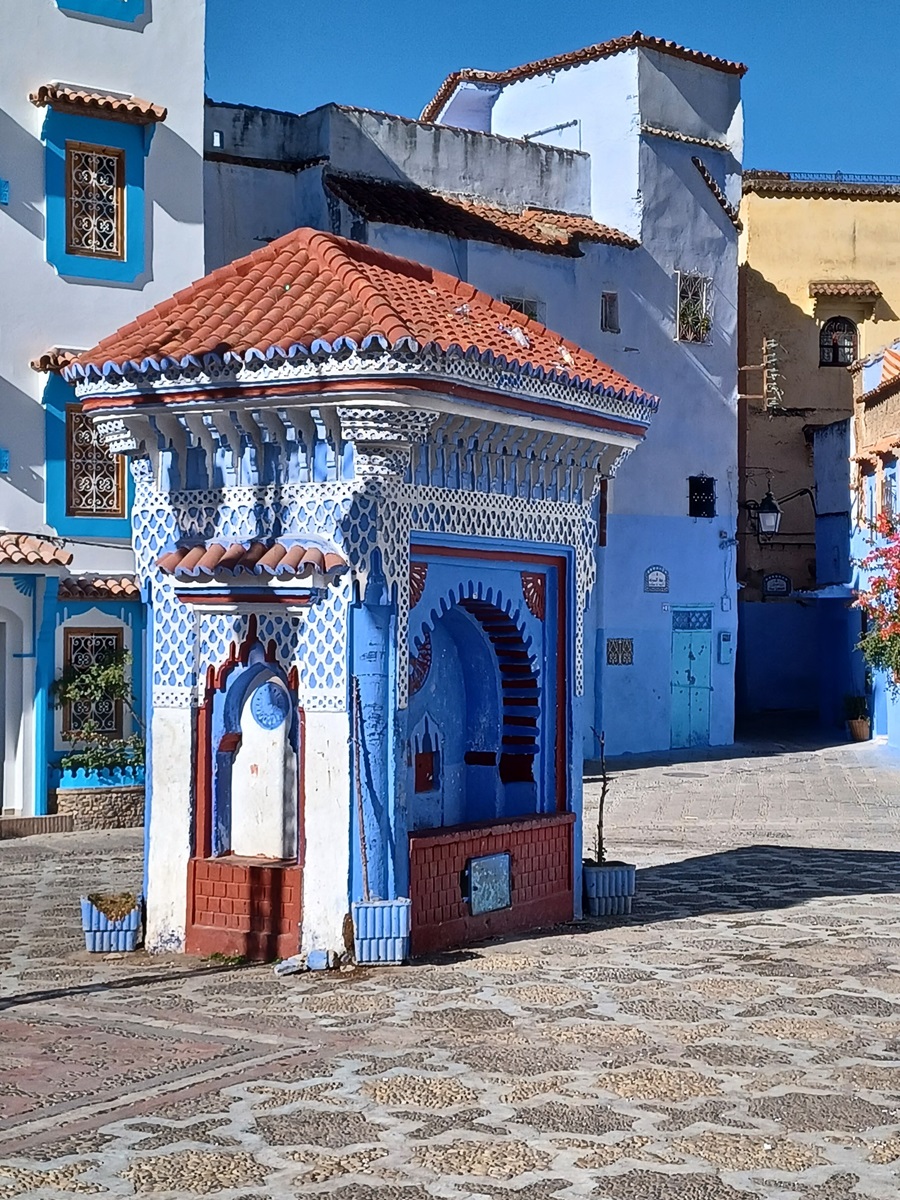
Historical Significance: The Kasbah, a fortress, was built in the 15th century and has played a vital role in the history of Chefchaouen. It has served various functions over the centuries, including a stronghold, a palace, and even a prison.
Architectural Features: The Kasbah is an excellent example of Moroccan architecture, featuring a traditional inner courtyard, beautiful gardens, and an impressive tower that offers panoramic views of Chefchaouen.
Cultural Exhibits: Inside, the museum houses an array of artifacts that showcase the history, culture, and art of the region. This includes traditional clothing, musical instruments, and old photographs, providing visitors with a deeper understanding of the local heritage.
Andalusian Gardens: The Kasbah's Andalusian-style gardens are a peaceful retreat and offer a contrast to the bustling streets of the medina.
Educational Value: While the museum offers a wealth of historical and cultural information, it's worth noting that the interpretative materials might be limited in languages other than Arabic and French.
Accessibility: Located in the heart of Chefchaouen's medina, the Kasbah Museum is easily accessible to visitors exploring the city.
Admission Fee: There's a small admission fee to enter the museum, which contributes to its maintenance and preservation.
Cultural Hub: The plaza serves as a cultural and social hub for both locals and tourists. It's a place where people gather, socialize, and enjoy the atmosphere.
Historical Significance: Surrounded by historical buildings, including the Kasbah and the Grand Mosque, the plaza is steeped in history. These structures add to the aesthetic and cultural appeal of the area.
Dining and Cafes: The plaza is lined with cafes and restaurants offering a range of local and international cuisines. It's a great place to try Moroccan dishes or enjoy a cup of traditional mint tea while people-watching.
Street Performers and Musicians: Especially in the evenings, the plaza comes alive with street performers and musicians, adding to its lively and festive atmosphere.
Proximity to Attractions: Its central location makes it a convenient starting point for exploring the Medina and other nearby attractions.
A relaxed market experience, great for shopping for unique souvenirs and handmade goods.
Vibrant Atmosphere: The Souk Market is known for its vibrant and lively atmosphere. It's a bustling hub where locals and tourists alike come to shop and experience the local culture.
Array of Products: The market offers a wide range of products, including traditional Moroccan crafts, textiles, clothing, spices, and local food items. Handmade leather goods and intricately designed ceramics are particularly popular.
Bargaining Culture: Haggling over prices is a common practice and part of the shopping experience in Moroccan souks. Don't hesitate to negotiate prices with vendors.
Local Specialties: The market is a great place to find local Chefchaouen specialties, like woven blankets and unique jewelry.
Culinary Delights: Aside from crafts and textiles, the market also offers an array of local foods and spices. It's a good place to try local snacks or buy ingredients for cooking.
Less Crowded Experience: Compared to the larger cities in Morocco, the Souk Market in Chefchaouen tends to be less crowded, offering a more relaxed shopping experience.
Exploring Local Life: The market is not just a shopping destination but a window into the daily life of Chefchaouen.